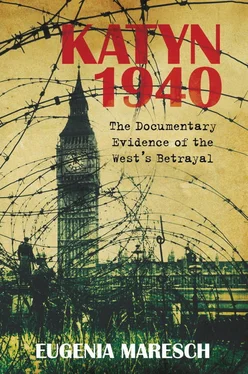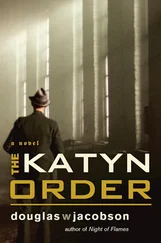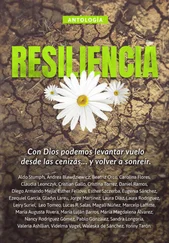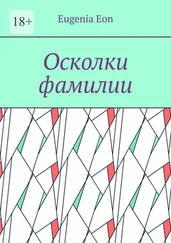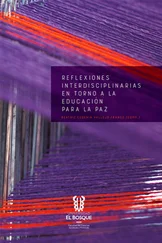In the same year of 1980, a group of Russian dissidents, among them Vladimir Bukovsky, Natalia Gorbaniavska and Aleksandr Ginzburg and others, published an article in a periodical Kontinient suggesting that soon it would be time for the Russian people to pass judgement on the murderers of Katyn. Little did they realise that with the birth of the Solidarność movement in Poland, which inspired perestroika and glasnost in Russia, in consequence the ‘white spots’ in Polish-Soviet relations were bound to be closely scrutinised.
In 1985 the two Presidents Mikhail Gorbachev and Wojciech Jaruzelski signed a declaration of ‘Cooperation in the Sphere of Culture, Learning and Ideology’ – with the aim that nothing should burden the future generations of Soviets or Poles with the deeds of their forefathers. This was a striking ratification, which enabled both sides to set up a joint committee of historians from the party political faithful. Lord Glenarthur in the House of Lords on 11 July 1988 declared: ‘There is indeed a substantial circumstantial evidence pointing to Soviet responsibility for the killings. We look to the Soviet-Polish Commission to settle the question once and for all.’
The Russian intention was to emphasise political, rather than academic co-operation between the Poles, led by Professor Jerema Maciszewski and the Russians under Professor Georgi Smirnov, the Director of the Lenin-Marx Institute of the Central Committee. Maciszewski, in a book written ten years later, describes Smirnov as an Adviser to the First Secretary Mikhail Gorbachev. Smirnov was not an historian, and tended to follow the contemporary anticommunist feeling abroad, yet he continued to assume that the Soviet ‘Special Commission’ under Nikolai Burdenko had already resolved the ‘ katynskij vopros’ in January 1944.
Throughout the post-war years, a select few Russians were privileged to read about Katyn. [2] Katyn. Dokumenty Zbrodni, Echa Katynia, Vol. IV, Warsaw 2006, Introduction pp. 28–36.
A young, inquisitive historian, Natalia Lebedeva, was one of them. In the 1970s, she studied the records of the Nuremberg trials and this was the first time that she came across the name ‘Katyn’. She was intrigued by Burdenko’s acceptance of the main argument, that the method of shooting of the Polish officers was comparable to those used by the Germans in Orle. Lebedeva’s supervisor, Professor A. J. Poltorak, tried to stop her, advising her that the case was not clear and it was better not to touch it. In 1988, an investigative journalist of Litieraturnaja Gazieta , Vladimir Abarinov, received a letter from A. A. Lukin, the former commander of 136 Signals Battalion, which in 1939 was in charge of PoW movements including the Kozelsk camp. Abarinov contacted Lebedeva for advice, as to how this letter could be utilised, as his search for information in the Central Military Archives had proved fruitless. Lebedeva knew the difficulties of getting access to several important archives, where the word Katyn was so secret that it was undocumented. But she followed her instinct not to search for operational documents that were out of her reach, but for the written records of the movements and assignments of 136 Battalion, which listed their journeys to Gnezdovo, Ostashkov and other destinations. This was the key.
Lebedeva was determined to delve deeper; through her academic contacts at the Historical Institute, she was recommended to Georgi Smirnov, head of the Historical Committee, who could help with general research in the Russian National Central Archives known as ‘Special’ CGOA ( Centalny Gosudarstvenny Otiel Archiv ). Two of her colleagues, Valentina A. Parsadonova and Yuri N. Zoria, were also engaged and together they collected enough material for a series of papers on the subject of Katyn. [3] Natalia Lebedeva Katyn: preiestuplenije protiv chlovechenstva , (Katyn: a massacre against mankind), Katyn zbrodnia przeciwko ludzkości , translated by K. Bidakowski, published by The Council for Defence of Memory, Strife and Martyrdom, Warsaw 1997.
The Polish–Russian Historical Committee
Katyn was not the only subject on the agenda of the Historical Committee, [4] Katyń. Dokumenty zbrodni Echa Katynia (Katyn. Documents of the crime) Vol. IV, Warsaw 2006, chapter 102, p. 459, a report of the Polish side of the Polish-Soviet Historical Committee of April 1988: Professors: J. Maciszewski, C. Madajczyk, R. Nazarewicz, M. Wojciechowski analysing the Soviet Report of 1944 (the Burdenko report).
there were other issues to be discussed, such as the 1920 Bolshevik war and its aftermath, the death of Soviet PoWs, Polish-Soviet relations, the execution of Polish communists by Stalin in 1930s, and the deportation of about a million Poles in 1939-1942 to the USSR. But Katyn still loomed large, and the aim was to present an expert commentary on the 1944 Burdenko report, to disprove Burdenko’s false evidence presented at Nuremberg.
The strategy was promising, but it did not bring immediate results. The Poles had to wait another four years for the Russians to disgorge their infamous Top Secret archives. The report, which has been paraphrased below, should be read in conjunction with the FORD report of 1944 written by Professor Sumner and the EE&S’s report of 1972. None of the British or Poles involved in the analysis of the Burdenko report was an expert in the field of forensic medicine or law, but they could analyse it from a logistics point of view and found the document to be fraudulent.
The leading Polish members of the Polish-Soviet Historical Committee of 1988 – Jerema Maciszewski, Czesław Madajczyk, Ryszard Nazarewicz and Marian Wojciechowski – were totally unaware of the FCO’s foursome from the East European and Information Research Departments, Mervyn Jones, Anthony Royle, Kenneth Duke and Derek Tonkin, and their 1972 unrestrained reassessment.
1. Out of 100 witnesses called by Burdenko; none came from the Polish group of internees, allegedly in the unidentified camps No.1-ON, No.2-ON, No.3-ON, or from the spared group at Griazovets camp. There were no witnesses called who were on Russian staff duties in all three camps, and nobody knew the fictitious Major Vetoshnikov, who was supposed to have been the camp commandant.
2. It would have been natural for Burdenko to include Poles from the Union of the Polish Patriots (Communists) who were in the USSR at the time, but he did not.
3. The Burdenko report stated that 11,000 officers lived in camps near Smolensk, yet the international group of journalists and press reporters were not shown any of the buildings, administration documents or any other proof. The question of prisoner evacuation when the Germans approached Smolensk also came under scrutiny and was found to be not believable.
4. The report presented at Nuremberg was at odds with the dates of the massacre. While witnesses stated that the Poles were shot in August–September 1941, at the International Military Trials, the Russian prosecutor changed it to September–December 1941, undoubtedly due to a remark made by the American journalist, that the bodies wore winter clothing.
5. The German unit accused of shooting the Polish officers was wrongly identified. Oberstleutnant Friederich Ahrens arrived in Smolensk in November 1941, his predecessor Oberstleutnant Albert Bedenck in charge of 537 Nachrichten Abteilung , (Divisional Signals unit 537), which reached Katyn in September 1941. Lt Ahrens testified at Nuremberg, that there was no construction unit ( Bauabteilung ) in Koze Gory. The same was true for the German operational group B ( Einsatzgruppe B ), which was also accused of the murder, this could not be proven and the Russian Prosecutor had to abandon the case.
Читать дальше
